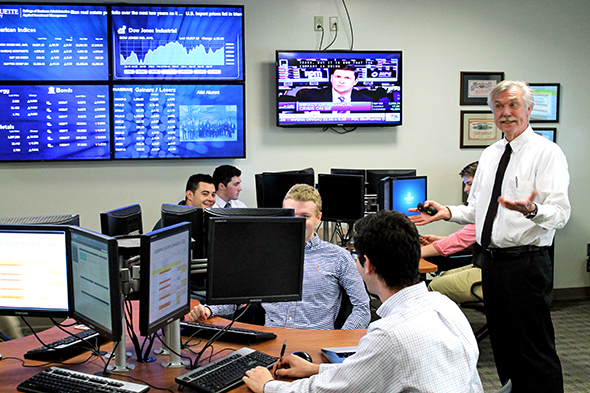“Making
Gains in Both the Gym and the Market”
By:
Christian Musbach, AIM Student at Marquette University
Disclosure:
The AIM Equity Fund currently holds this position. This article was written by
myself, and it expresses my own opinions. I am not receiving compensation for
it and I have no business relationship with any company whose stock is
mentioned in this article.
Summary:
•
Hannon
Armstrong Sustainable Infrastructure Capital, Inc. (NYSE: HASI) is
a REIT that focuses on solely investing in climate change solutions and reducing
carbon emissions. They are able to do this by providing capital and expertise to
companies that are in the sustainable infrastructure markets. The investments
made by HASI come in the form of equity, joint ventures, land ownership,
lending, or other financing transactions. The company is headquartered in
Annapolis, MD and was founded in 2012.
•
The first driver for the pitch of HASI in
early 2018 was decreasing renewable energy costs and the trends have continued.
•
The second driver for the pitch of HASI
dealt with the growing demand for renewable energy and this has held. Management
expressed the upward trend in climate change should yield higher returns for
the portfolio as investors start realizing the negative impacts. This market is
expected to grow to about $75 trillion in the next three decades.
•
Despite the lower earnings in Q2-19 than
expected, HASI is growing. In their Q2-19 filing, they closed $523M of
transactions YTD compared to $308M in 2018.
Key
points:
The original pitch for
HASI was driven by the decreasing costs of renewable energy. According to a
study done by Forbes, the cost of wind energy and solar energy fell 13% in
2018. This decreasing trend is making renewable energy look more attractive
compared to fossil fuels. The International Renewable Energy Agency (IRNA)
expects the power generated from wind and solar energy to be cheaper than
fossil fuels in the next year.
HASI invests in a market
that has expected long-term sustainable growth. According to a report from the
IRNA, the investments in renewable energy are expected to be about $75 trillion
in the next three decades. This is driven by investors’ realization of the
negative effects of climate change which was mentioned as a second driver in
the pitch. HASI looks to act on this by continuously investing in climate
change solutions. The pipeline is about $2.5 billion which is robust. The
pipeline consists of supply-side and demand-side investments to be diversified.
The makeup of the pipeline is as follows: 79% for behind-the-meter (BTM)
markets, 12% for grid-connected (GC) markets, and 9% for sustainable infrastructure
(SI) markets. Also, for 2019, they are on pace to close around $1B of
transactions for the year.
The reported Q2-19
earnings were lower than expected for HASI. The EPS was $0.30 and net revenue
was $16.4M. The reason for this is that 90% of the $204M in transactions closed
were added to the balance sheet. In comparison, only 10% was added in Q1-19.
This reduced short-term profitability, but is stronger for the long-term. In
total, HASI has closed $523M in transactions YTD compared to $308M in 2018.
What
has the stock done lately?
HASI has had strong
revenue growth with a 38.14% increase for 2018 and a 21.78% increase in
operating income. Currently, the stock price is $29.51 per share which is near
the high for the 52-week range of $18.83 - $29.98. Over the past month, the
stock is up 1.41%.
Past
Year Performance:
Over the past year
(October 2018 – October 2019), HASI is up 49.12% and 5.66% in the past three
months. The stock price is expected to continue to grow based on the continual growth
in their industry. The current P/B ratio is at 1.44x which is a bit shy of the
5-year average of 1.59x. HASI is in a good position and has room to grow.
1
Year Stock Chart vs. Benchmark
Source:
FactSet
My
Takeaway:
HASI should remain in the
AIM small-cap portfolio. The environmentally-sound market that HASI invests in
will be sustainable for the long-term. The short-term shortfall in earnings
should not be a reason for concern because they had a high transaction volume
added to the balance sheet. In the original pitch, two of the drivers
specifically have held. First, the decreasing costs of renewable energy have continued.
Second, the demand for renewable energy is increasing as climate change effects
gain traction. The combination of the management experience paired with a
sound-investment focus, HASI will remain strong for the foreseeable future.
1 Month Stock Chart
Source: FactSet











